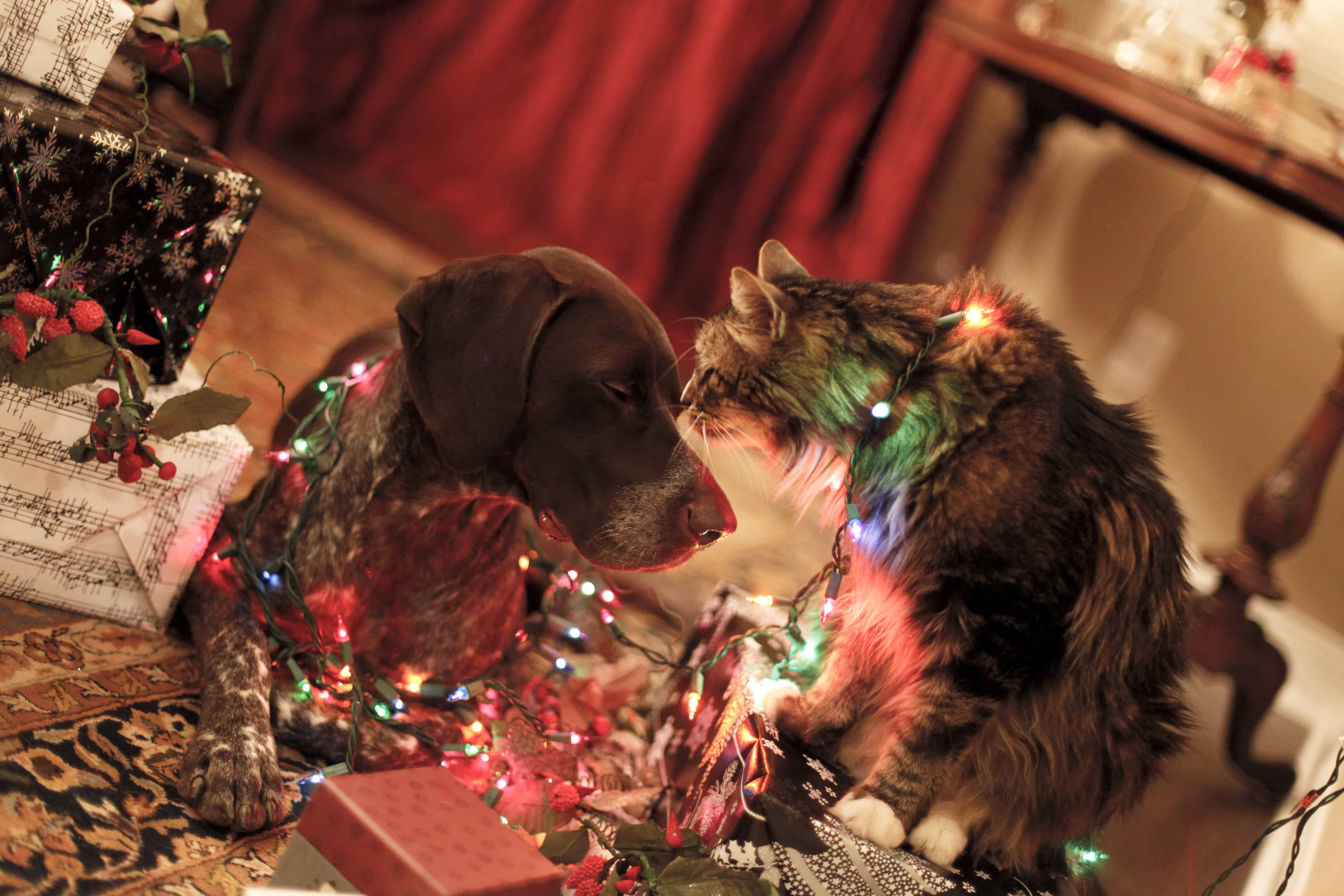Good Combo? The Truth About Holiday Plants and Pets
 It’s possible that your pet shows little interest in your recently purchased potted beauty, but if it’s wrapped in shiny red or green material, take heed. While certain holiday plants add a great deal to your home’s holiday aesthetic, they have the frightening potential to cause a pet emergency. Your friends at Rocklin Ranch understand these concerns and offer the best tips concerning holiday plants and pets.
It’s possible that your pet shows little interest in your recently purchased potted beauty, but if it’s wrapped in shiny red or green material, take heed. While certain holiday plants add a great deal to your home’s holiday aesthetic, they have the frightening potential to cause a pet emergency. Your friends at Rocklin Ranch understand these concerns and offer the best tips concerning holiday plants and pets.
All the Pretty Little Things
With all the sparkles, glitter, and blinking lights, the holidays take on a certain magical quality. Likewise, bannisters wrapped in garlands of evergreen and decorative wreaths and centerpieces add a warm holiday appeal to any home. If you can keep these holiday plants and pets apart, you’ll be taking preventive measures against a potential poisoning or other emergency.
Holiday Plants and Pets
Starting with the most visible holiday plant, the Christmas tree can be responsible for the following potential problems:
- Pine needles are not digestible, causing gastrointestinal obstructions (or worse) if ingested. Likewise, natural tree oils can also result in serious irritation if eaten.
- When stepped on, tender paw pads can be irritated or injured.
- Commercial trees may be treated with chemical preservatives, pesticides, or fertilizers that seep into the water of the tree stand. Make sure your stand is completely covered to discourage drinking.
Another Common Culprit
It’s very common to blame the poinsettia for holiday pet poisoning, but the mildly toxic sap produced by the plant is only responsible for irritation, vomiting, and nausea. It’s a great idea to avoid placing a potted poinsettia on or near the ground where your pet might be tempted to munch on it. Instead, place it on a surface not frequented by your pet or simply move it outside.
The Usual Suspects
Other holiday plants that pose significant health risks to your pet include:
- Amaryllis – This plant, also known as Belladonna, Naked Lady, and Saint Joseph Lily, can cause vomiting, diarrhea, and abdominal pain. The bulb is extremely dangerous for pets to eat, but the stalk and flower should also be avoided.
- Mistletoe – The good news about this plant is that it’s often displayed high above any area your pet could reach. Nevertheless, please know that it’s laced with highly toxic substances that can result in dangerous decreased blood pressure, respiratory issues, possible hallucinations, seizures, and even death.
- Holly – While we wouldn’t want to eat these on account of their prickly, pointed leaves, your pet may not be as discerning. Even dried leaves and the typical berries that accompany them are very dangerous.
Be Merry and Safe
We believe there are viable (and stylish) alternatives to decorating with dangerous holiday plants. Artificial Christmas trees have come a long way in the past decade, and silk arrangements can add a great deal to your holiday ambiance. Keeping a safe distance between holiday plants and pets is always the best bet.
For more information about celebrating the holidays safely with your pet, please give us a call.
Happy Holidays from all of us at Rocklin Ranch Veterinary Hospital!

